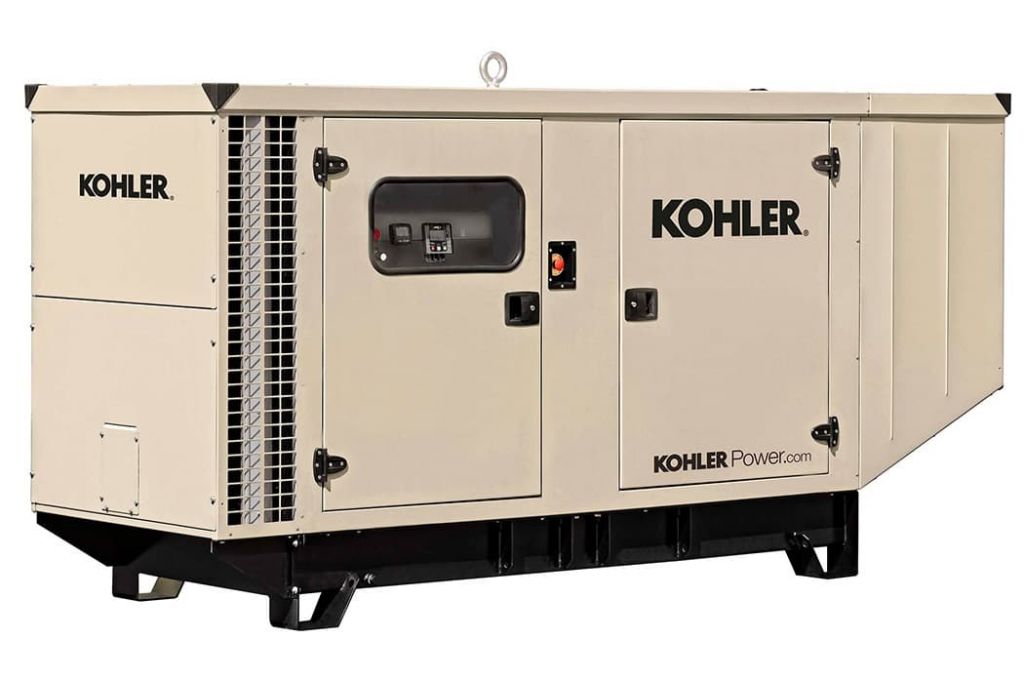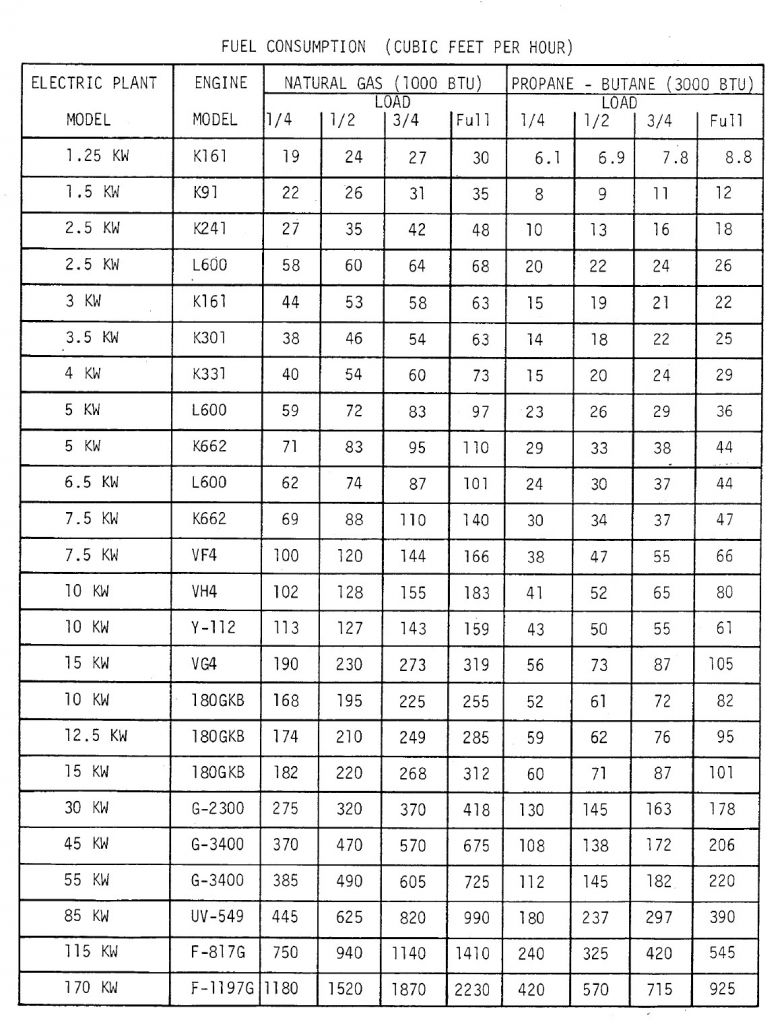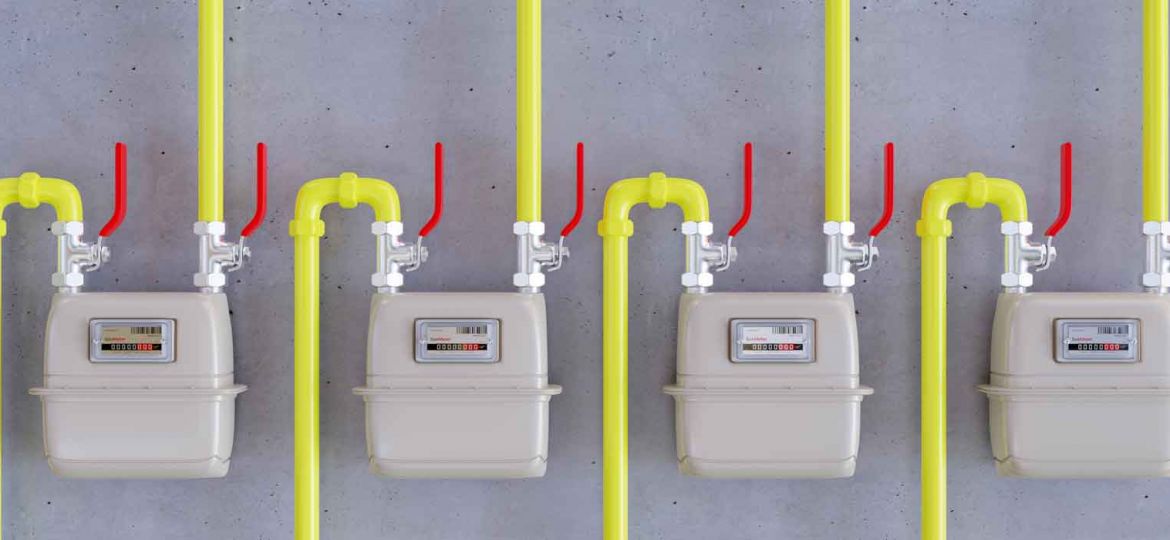The dynamic world of energy generation calls for an intricate understanding of fuel efficiency and fuel consumption in generators. An essential tool to gain this understanding is a fuel consumption chart. This guide aims to shed light on a particular chart, which illustrates the consumption for natural gas and propane-butane fuels in Kohler generators with varied engine models (K161, K91, K241, L600, K301, K331, K662, VF4, Y-112, VG4, 180GKB, G-2300, G-3400, UV-549, F-817J and F-1197G), operating at quarter, half, three-quarters, and full load capacities.
A well-presented fuel consumption chart, like the one on hand, is instrumental in guiding energy consumption behaviors and choices. It allows users to appreciate the relationship between generator power (ranging from 1.25KW to 170KW), load capacity, and fuel consumption (measured in cubic feet per hour). Having such insights at disposal is extremely empowering as it encourages informed decision-making about which generator to use and when. Moreover, understanding these consumption values have profound implications for managing operational expenses, planning for fuel supplies, and maintaining a keen focus on environmental sustainability.
How to Use the Fuel Consumption Chart

Using this chart is relatively straightforward if you know what you’re looking for:
Identify the type of fuel you’re dealing with (natural gas or propane-butane), necessary since each has a different BTU or British Thermal Unit (a measure of the heat content).
Look for the engine model and ascertain the power in KW your generator holds.
Depending on the load capacity you’re operating (quarter, half, three-quarter, or full), find corresponding fuel consumption metrics.
The chart not only gives a snapshot of current fuel consumption but can also serve as a predictive tool for future fuel needs.

The BTU: Why 1000 and 3000?
Natural Gas and Propane-Butane are allocated 1000 BTU and 3000 BTU respectively. This allocation reflects each fuel’s heat producing capacity. Natural gas releases a smaller amount of heat per unit, hence the 1000 BTU. Conversely, propane-butane fuels are denser, resulting in a higher BTU value. Understanding this distinction is vital since it directly impacts fuel efficiency, cost calculations, and carbon footprint.
The fuel consumption chart plays a pivotal role in maximizing energy efficiency, ensuring cost-effectiveness, and maintaining a low environmental impact. Further, understanding the significance of the BTU values designated to different fuels imparts a clear idea about their heat generation potential, which forms the cornerstone of their practical usage in energy generation. The fuel consumption of any generator is essentially the mirror of its efficiency, and predicting it unfurls the path of rational energy consumption.
Don’t hesitate to reach out for any further information or assistance regarding to generators fuel consumption. Contact us at the phone number +1.954.657.7777, or write to us at info@bnhgenerators.com, and we will gladly help you.


